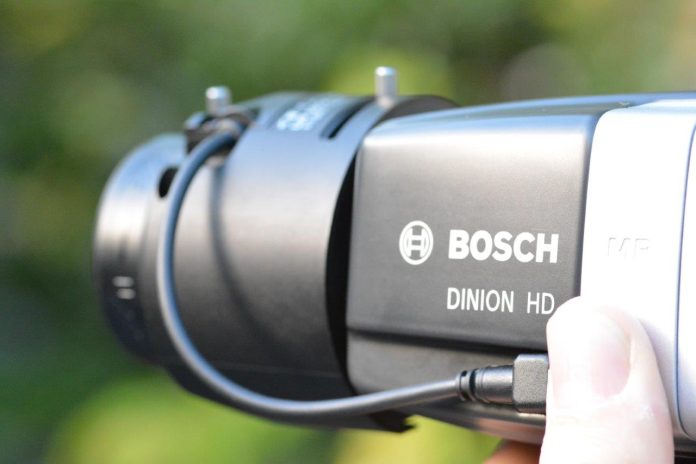Bosch’s 5MP Bosch DINION IP Starlight 8000 MP camera is a low light camera that offers a minimum scene illumination of 0.00825 at 1080p and 0.0121 at 5MP at 30ips, along with 119dB of wide dynamic range. We’ve looked at this camera in the light box but this is the first time we’ve seen it in the wild.
WHEN a company as conservative as Bosch uses the words star light in its camera specification sheets, you can be assured the product is something special. And that’s what we found when putting this camera through its paces recently. The camera does well during the day but as night falls, things get better and better.
The DINION IP Starlight 8000 MP is designed to produce colour images in the dark beyond the point other cameras trigger their cut filters and hop to monochrome and that’s very much what this camera does. The low light numbers Bosch quotes are lower than we could hope to achieve at our city office, regardless of the time of night. But in 4 lux the Bosch starlight stayed in colour and in a variable scene which included large areas of sub-1 lux with a couple of brighter spots, we saw strong performance in black and white.
Camera specifications
In terms of specifications, the Bosch Starlight has a chunky 1/1.8-inch 6.1MP CMOS sensor, 119dB of WDR, claimed low-light performance of 0.0121 lux at 5MP and 0.00825 at 1080p, and edge recording including a MicroSD card slot (rated for 32GB, but works with a 64GB card). This functionality gives in-camera playback of recordings 30fps @ 5MP in 16:9 (2992 x 1680) or 4:3 (2704 x 2032) or 1080P (1920 x 1080). Other features include Intelligent Motion Detection, Intelligent Dynamic Noise Reduction, day/night IR cut filter, PoE or 12V power and alarm and audio input and output.
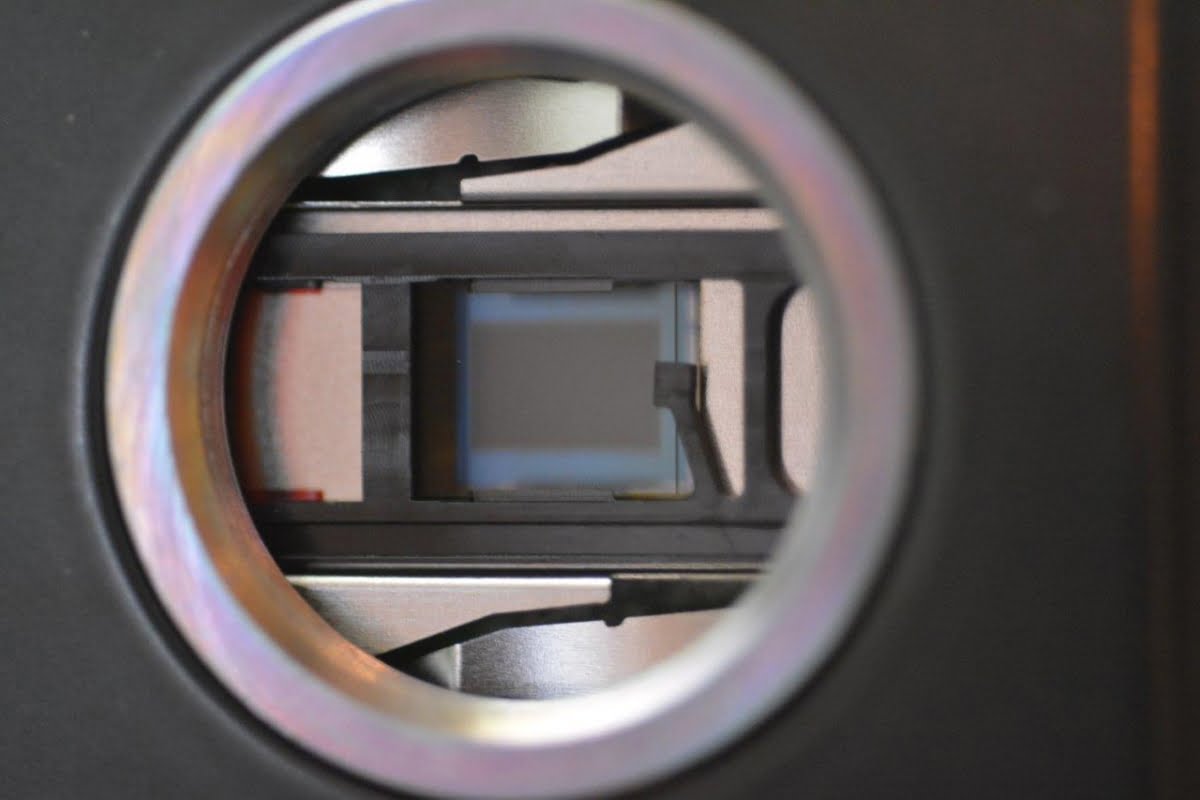
Here’s the big 1/1.8-inch sensor.
The lens I’m using for the test is the Bosch f1.6 4.1-9mm with SR iris, which is made in Japan. The lens is light in weight and compact in size. Its longer focal relates to the larger size of the sensor. For reasons of perspective, a large 1/1.8-inch sensor with a 4.1mm lens gives the same field of view as a 1/3-inch sensor with a 2.8mm lens.
Our test jig is a Dell 9020 server workstation with an Intel i7-4770 3.4GHz quad-core processor (8 threads per core), with 8GB of RAM. The workstation runs an AMD Radeon R7 250 graphics card with 2GB of RAM. Camera power and data are handled by a dedicated Netgear GS108P ProSafe 8-port Gigabit switch. With a single camera to drive (2992 x 1680 pixels and a 5.5Mbps stream measured at the browser), at no time is the server doing more than an idle so we’re getting a very clean throughput with this setup.
When the Bosch Starlight arrives for testing, its physicality is the immediate impression. I’ve had this 855g camera in my hands before during a light box demo at the Bosch HO in Huntingwood. It’s a well-built camera and all the organically rounded edges and port holes are very nicely done. After the camera has been powered up a while it warms but it’s never more than warm, even after 24 hours.
Before I start playing with the camera properly, I hop in through the camera browser and play with setup – I use the Scene Mode Scheduler to set the camera to Outdoor during the day and Night Optimized when the camera switches to Night mode. The Bosch browser is comprehensive, with options to play with colour, ALC, image enhancements, encoder profile and regions, and privacy masks. As mentioned earlier, with a microSD card handling edge IVA, you can record and playback from the camera through this browser.
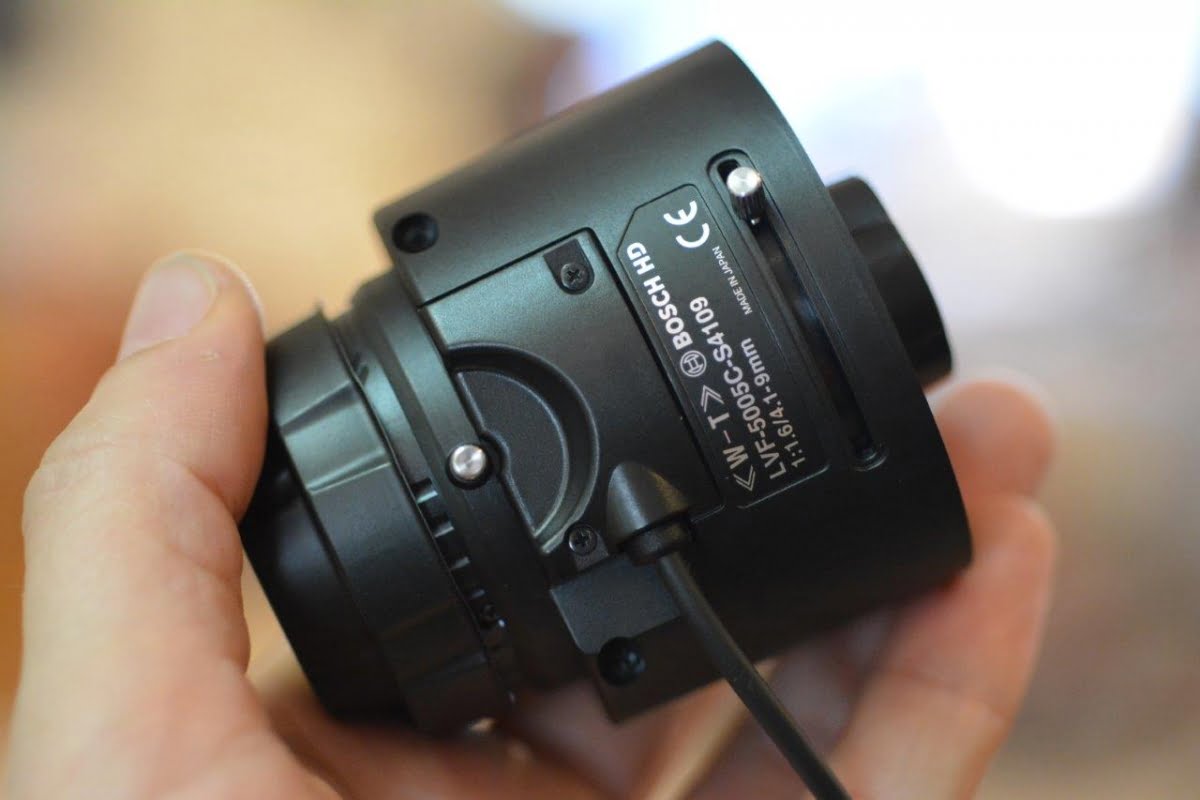
There’s plenty of recording functionality to play with, including storage management, recording profiles, maximum retention, extremely comprehensive recording scheduler and status. In Alarm mode you can set up connections, video content analysis, audio alarm, alarm task editor and email on alarm event. You can also play with interfaces, network settings and servicing and there’s plenty more here I’ve not mentioned.
It’s an extremely comprehensive browser. The first thing I do when setting up the Bosch camera is turn off dynamic host configuration protocol and set the IP address to match the local subnet. Once this is done, the image appears on the monitor in SEN’s Ocularis IS VMS without any further ado.
Down to testing
First up, I play with the Starlight out the back and torture it with 90,000 lux from direct sunlight poking around the adjacent office towers. It’s a really painful time of day for a camera and I manage to get some flare in the lens with the sun right above the edge of the image. Bear in mind, I have the camera pointed up at about 10 degrees, no real world application would be handled like this.
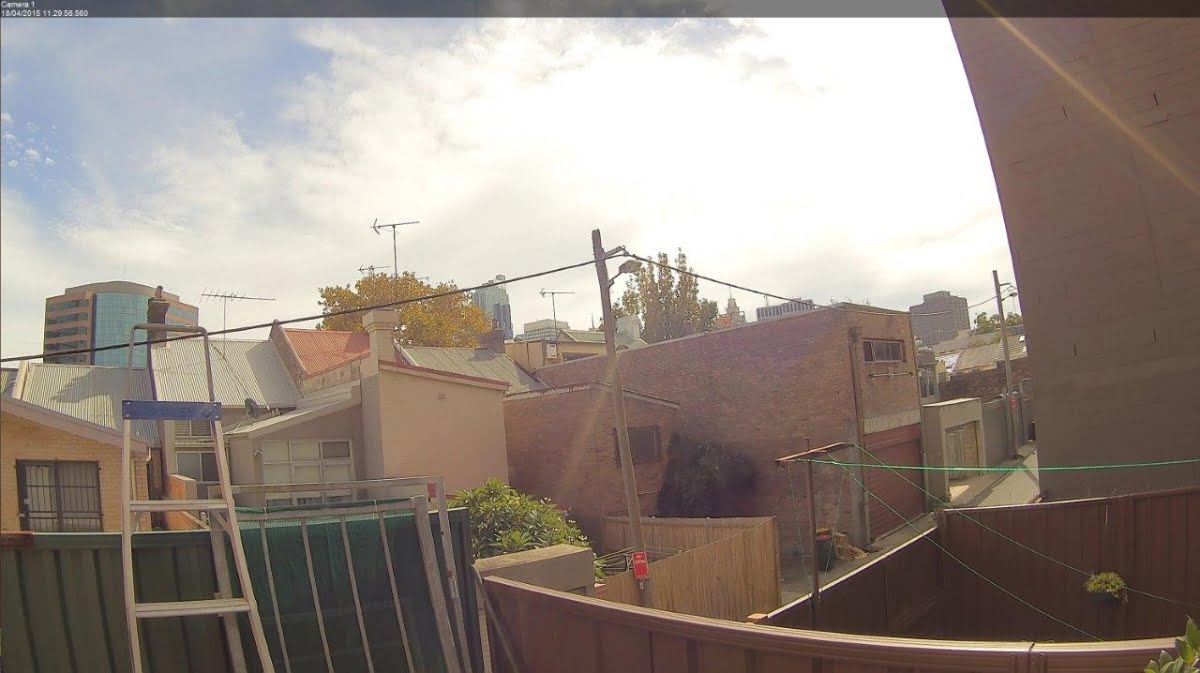
I got some flare off the lens elements with no sunshade and sun just above the field of view but camera performance remains strong, with excellent detail and depth of field. You can see classic wide angle lens barrel distortion in the vertical lines towards the edges of the frame. I saw no chromatic abberation at any time, which is impressive.
Then it’s time to have fun inside with WDR coming through the open back door. Starlight does well under these conditions. It’s not the best camera I’ve tested in terms of absolute resistance to backlight but the image quality it produces in the presence of backlight is detailed and very true, which is a feature of this camera’s work.
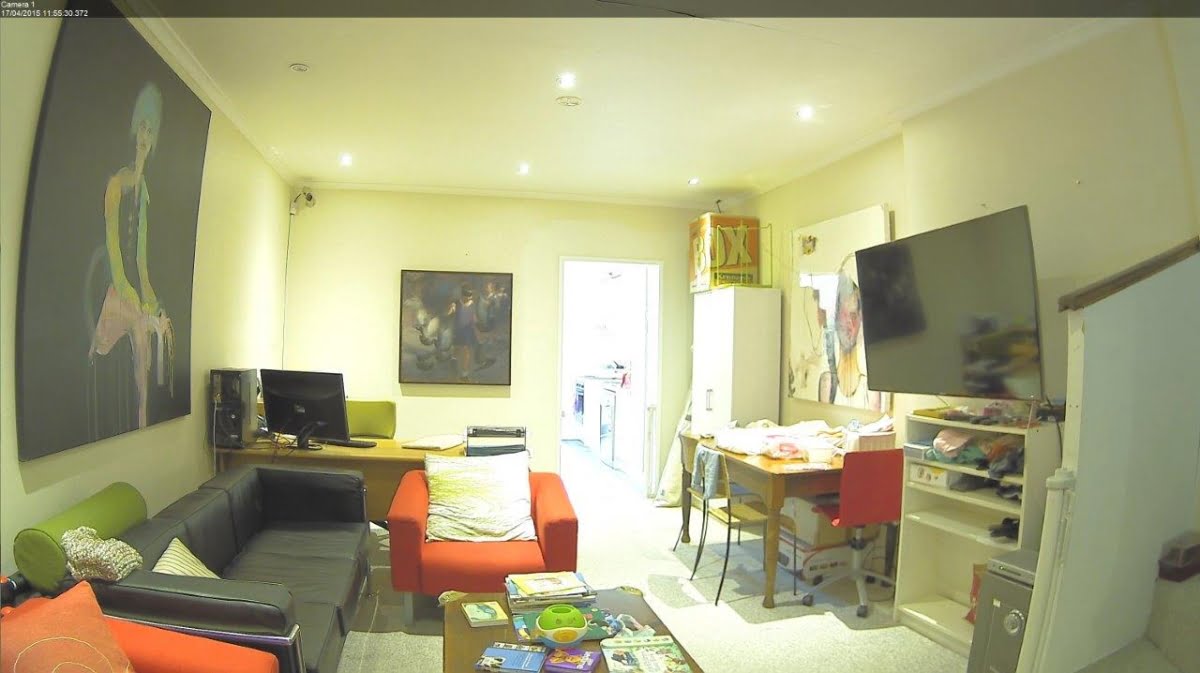
There’s obscene levels of backlight coming through the glass rear door of the office. Again you see the good colour and the excellent textured detail. This image is only about 150Kb from memory. The full resolution snapshots are 1.5Mb and offer far more detail.
But when night starts to fall and I take the starlight out the front of the office, the enjoyment really starts and that’s because the strength of this camera is its night performance. That’s not to say the work during the day isn’t good, but as things get dark you start to notice strange things with Starlight. Bosch talks some giddy low light numbers. I guess we could take the tripod down into the garage and see if they are perfectly accurate but my Sekonic only goes down to -1EV, around 1.25 lux. In any case, the area of illumination I was interested in, and installers and end users will care most about, was between 1-4 lux.
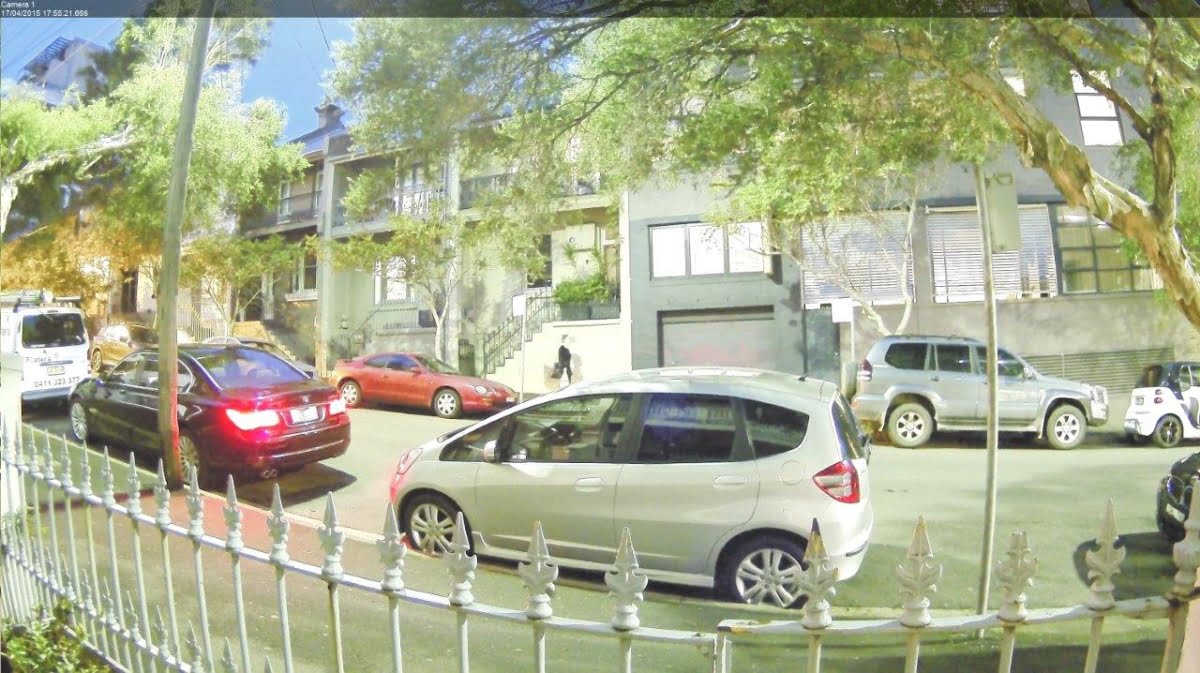
This scene was at 4 lux – just before 6pm EST in Sydney. I took a light reading the following night at the same time just to make sure I’d got it right…
The Bosch Starlight does funny things at 4 lux. It stays in colour, it doesn’t seem to be troubled by noise. Contrast stays tight. Things in the scene look far brighter than they seem to the naked eye. The sky is rendered a deep shade of blue. Depth of field is cavernous. And you get the benefit of that big resolution. This allows you to peek into a scene with digital zoom and snaffle license plates at 10m. You can also get useful clothing and face recognition at 15m at this light level. It’s not court admissible face recognition but it’s very good. You have to look at the images on-screen to understand what these words mean. You just can’t do this stuff at 1080p – not without a PTZ camera driven in real time.
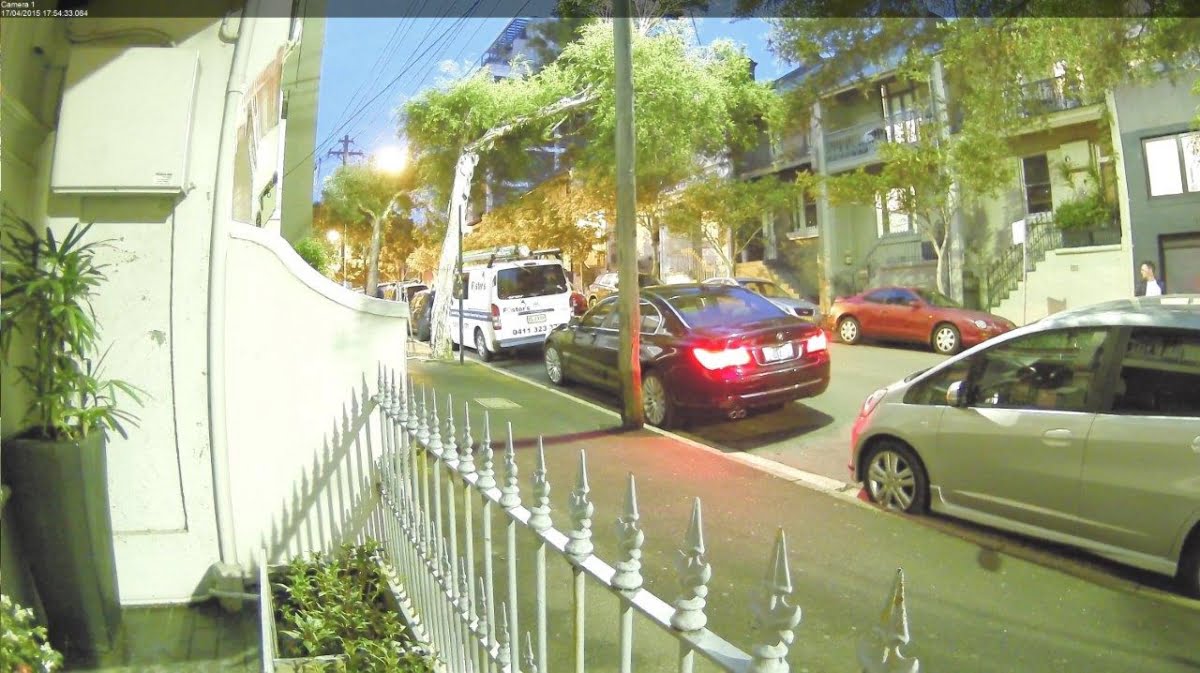
Improbably good performance in colour at 4 lux at the lens from the Bosch Starlight…LPR was easy to attain with a mouse wheel roll of digital zoom. The van is about 13-14 metres from the lens.
“Bosch Starlight does funny things at 4 lux. It stays in colour, it doesn’t seem to be troubled by noise. Contrast stays tight”
When I take the Bosch Starlight out the back of the office, the strong performance continues. It’s much darker out here. My light meter refuses to take a reading, so light levels are under 1 lux. As I was setting the camera up in the rear courtyard, I heard the cut filter mechanism switching the camera into monochrome. It’s a good image in black and white. The loom of the city lights glows on the horizon, brightening the sky. There are lights in the lane and coming from the rear of neighbouring homes but ambient light in the courtyard is under 1 lux, in the lane it’s under 4 lux and away from the streetlights adjacent to the lane, it’s between 1-2 lux at most.
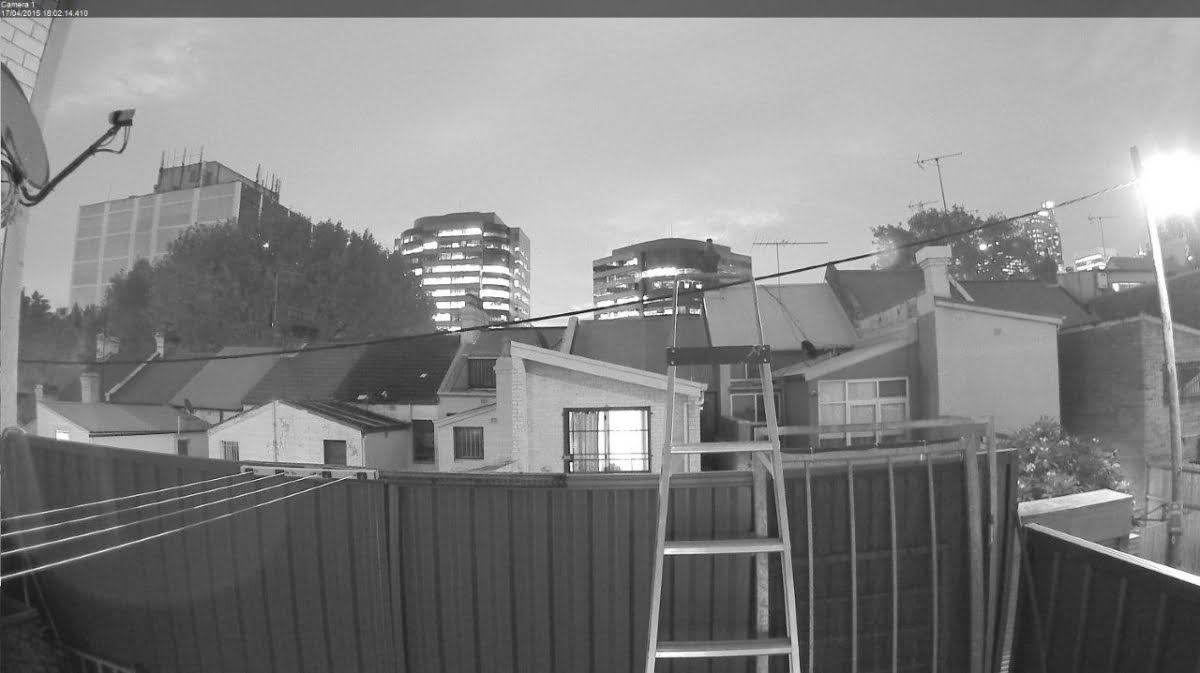
There’s good detail all the way through this scene. The lens is at infinity and I measure 1 lux at the lens. This scene was quite dark to my eye. The low pressure sodium lamp top right looks bigger and brighter than it does in reality. A relaxed shutter speed is likely the culprit.
I am getting detail in bricks, tiles and tin roof tops at 15m, chimney pots at 25m, as well as detail of leaves and TV antenna. The offices in the buildings down on Elizabeth St look slightly 3-dimensional – Starlight is peering in through the windows and showing internal ceilings at 250m. There’s a car in the back lane at about 20m and though I can’t read the number plate, the image is very good.
Something the Bosch camera handles exceedingly well is noise. There’s very little noise and few if any noise reduction artefacts. Often you get a sort of ethereal shimmer in low light as ISO winds up but I don’t see this with the Starlight. I think I’m getting a ghost inside the lens from the sodium streetlight in the lane but it’s not impacting on the image’s useability. The detail in the image shows just how much contrast the Bosch starlight camera is contriving to pull out of this scene all the way through to about 40m. The high resolution of the camera makes the digital zoom seriously useful, just as it is during the day.
“Offices in the buildings down on Elizabeth St look slightly 3-dimensional – Starlight is peering in through the windows and showing internal ceilings at 250m”
Apparent image sharpness at night when depth of field is reduced has less to do with the lens, and more to do with how much contrast the sensor and supporting processors and firmware can winkle out of a given scene. Making life a little easier for the Starlight, there’s no traffic and little if any movement out back, but for a few leaves moving.
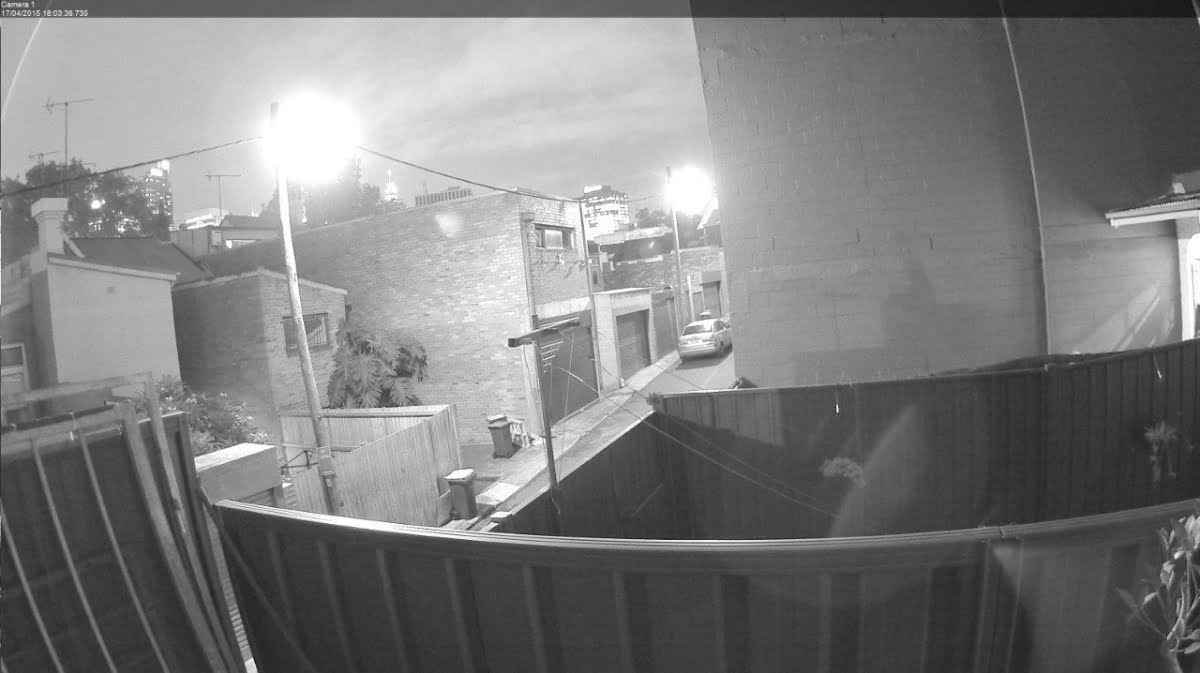
There’s an awful lot of fine detail in this scene. Either a slow shutter speed or elevated ISO is growing the streetlights in the lane. Light at the lens is around 1 lux. There’s a quite complex ghost being provoked from the lens elements by that streetlight on the left, but nothing that impacts on the usefulness of the image.
I have sharpness set to balance, backlight compensation is on, contrast enhancement on, intelligent DNR is on, Temporal noise filtering and spatial noise filtering are both set to balance. I keep my brightness, contrast and saturation settings at the midpoint. I usually advance brightness considerably for a night test like this but did not feel compelled to do so with the Bosch Starlight.
Same as every camera I test from bright day into night, the Dinion Starlight’s daylight images improved noticeably as light levels fell from 90,000 lux down towards 1000 lux. Film producers are right – the late afternoon is the best time to film, the hard shadows melt and perspectives deepen. Depth of field and contrast both improved with the Starlight as the afternoon wore on.
Conclusion
When it comes to a summary of Bosch Starlight, it’s hard not to be repetitive. I found the browser to be a great tool. It’s easy to find your way around but most of all, it’s profoundly comprehensive. I notice some barrel distortion with the lens – you can see its effects in the vertical lines in the scenes. It’s pronounced, but typical, and does not impact on surveillance performance.
There’s lack of noise and noise suppression artefacts and I see no rebuilding artefacts at any time. Sharpness is strong, contrast is strong, colour rendition is good. Image reproduction is realistic, even in the presence of strong backlight. Colours are never over saturated. The backlight performance of the camera is generally good. WDR is solid, even without class-leading numbers, the camera seems to do better than you would think, though 119dB is nothing to be sneezed at.
Overall, the acuity of the images is extremely good. The high resolution is really noticeable with Starlight. You can delve a good distance into the scene using digital zoom and get useful detail, which is just not possible with 1080p with a wide angle lens. And along with this resolution you get 30ips. Bonus! Plenty of high resolution cameras don’t offer real time performance.
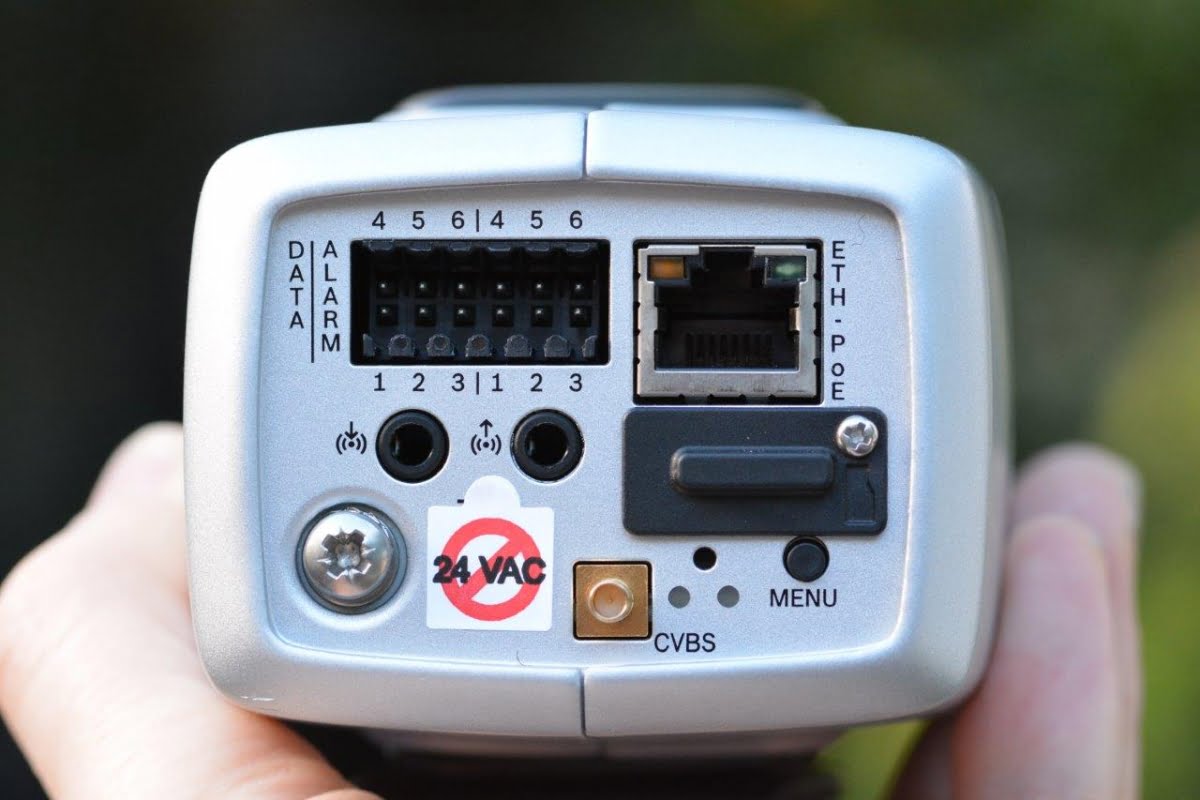
It’s Bosch and it’s well-made.
Then there’s the compression – for a camera with 5MP, Starlight does well. At the browser I register 5.5Mbps at 5MP and 30ips. But at SecTech Roadshow across a range of static conditions, the Starlight consistently measured under 700kbps and sometimes as low as 500. There was a lot of discussion at SecTech about how Bosch achieved this performance and whether the VMS was impacting on compression, but given the solid image it was impressive however you look at it.
Finally, lowlight performance is exceptionally good – the performance in colour down at 4 lux is a genuine eye-opener. And in monochrome under 1 lux, this camera is extremely good, too. The Bosch Starlight is right at the very top of the heap when it comes to low light performance and in those high security applications where balanced performance throughout a 24-hour period is required, it should figure seriously in your calculations. ♦
By John Adams
Features of Bosch Dinion Starlight 8MP
* 1/1.8-inch 6.1 Megapixel CMOS sensor
* 119dB of wide dynamic range
* Minimum scene illumination 0.0121 lux at full 5MP
* Edge recording including a 32GB microSD card slot
* 30fps @ 5MP in 16:9 (2992 x 1680) or 4:3 (2704 x 2032) or 1080P (1920 x 1080)
* Intelligent Motion Detection
* Intelligent Dynamic Noise Reduction
* Day/Night IR Cut Filter
* Powered by PoE or 12V
* Alarm input/output
* Audio input/output.




